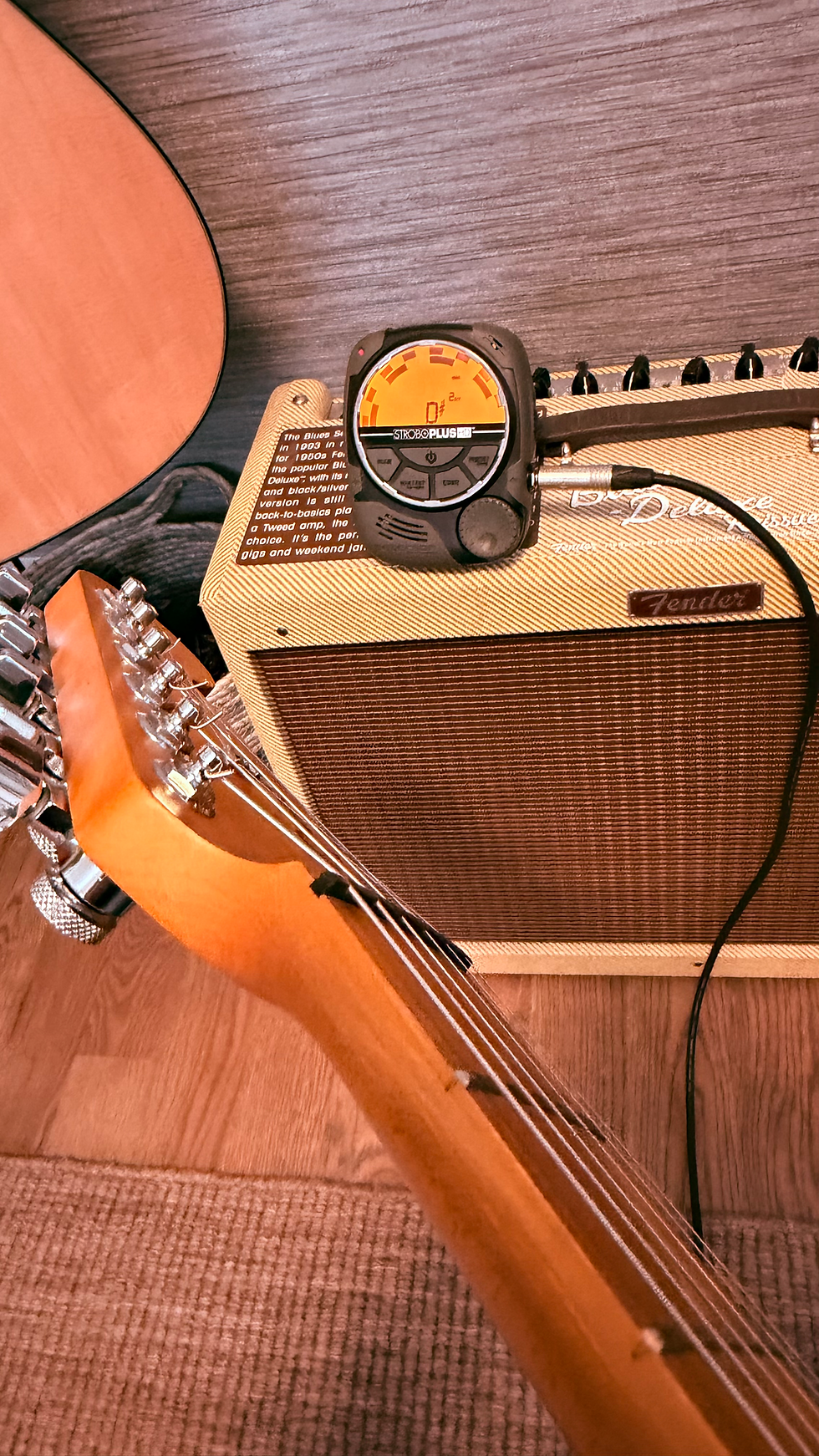Using a Capo is Not Cheating
- Joe Squillacioti
- Nov 4
- 2 min read
The other day I met a new friend who happened to play guitar. When he stepped into my guitar room, his eyes went wide as he saw the rows of instruments hanging on the wall—electric, acoustic, odd balls and classics. When he reached my acoustic guitars, he noticed something curious: every single one had a capo clipped to the headstock.
He gave me a puzzled look and said, “You use a capo? Isn’t that cheating?”
I was stunned. “No!” I said. “It’s not cheating.” My first thought was, Go ahead and try to play “Hotel California” like the record without a capo—or “Fire and Rain,” or countless other classics. A capo isn’t a shortcut; it’s a tool—a creative one at that.
It made me realize that maybe a quick introduction to capos is in order.

Why Would a Guitarist Use One?
1. Transposing Songs Easily
A capo allows a guitarist to quickly transpose a song into a different key without changing familiar chord shapes. Place it across a fret, and suddenly the entire neck shifts up by half steps. For example, if you put a capo on the first fret and play an open G chord, you’re now playing a G#.
Sure, you could use barre chords to get there—by sliding a G barre chord from the third fret to the fourth—but it doesn’t have that same open-string resonance and shimmering tonal color that an open G provides. The capo preserves that natural, ringing sound that so many songs rely on.
It’s also a lifesaver when you’re playing with singers. Imagine you show up for a gig, and the vocalist says, “Hey, my voice is a little weak tonight—can we lower the key for the first song?” Don’t panic—just move your capo. You can shift keys in seconds, keeping your same chord shapes and fingerings while matching the singer’s range. A song in G can become a song in C simply by placing a capo on the fifth fret.
2. Simplifying Complex Chords
Another great reason to use a capo is to make difficult songs more playable. It lets you use open chords in keys that would normally require barre chords or awkward finger stretches. This not only simplifies playing but also keeps your sound richer and more resonant. It’s a secret weapon for beginners and pros alike.
3. Achieving Unique Tonal Qualities
Beyond transposing and convenience, a capo can completely change the mood of a song. It alters the guitar’s tonal range, making it sound brighter, tighter, or even harp-like. Paul Simon used a capo on the seventh fret to achieve the haunting sound of Scarborough Fair. The Eagles used one on Hotel California—paired with a 12-string guitar—to create that iconic, harpsichord-like shimmer that defines the song.
A capo doesn’t make you less of a guitarist. It makes you more of one—someone who understands tone, creativity, and musical adaptability. So the next time someone says, “Using a capo is cheating,” hand them a guitar and say, “Show me Hotel California—no capo.”










Comments